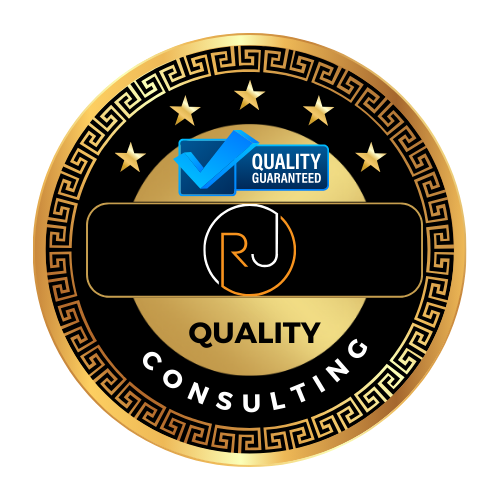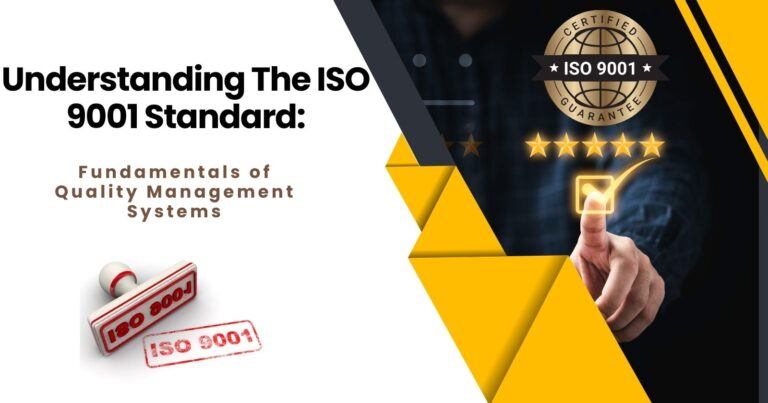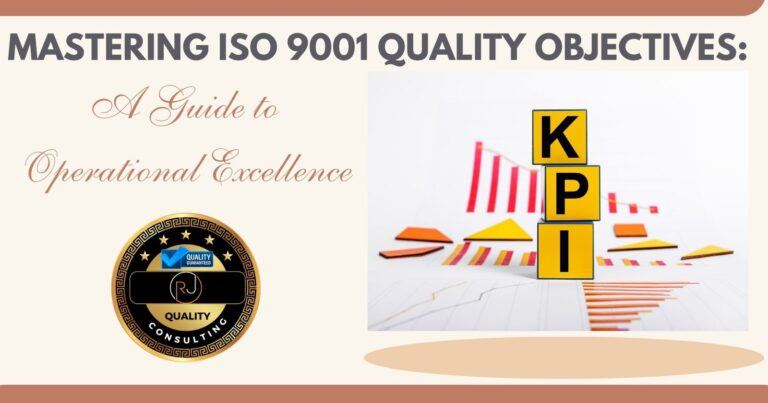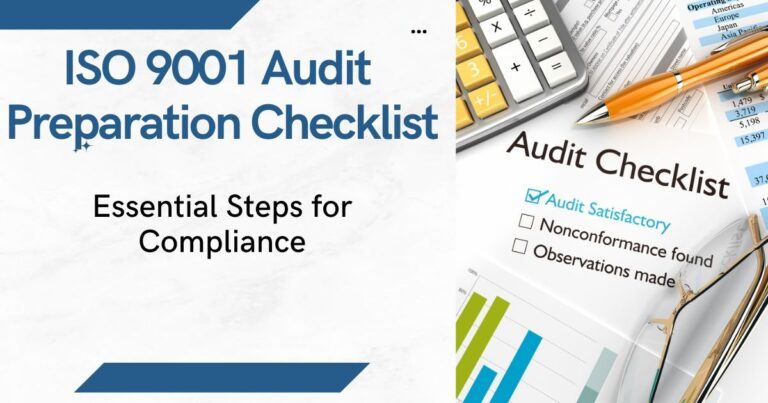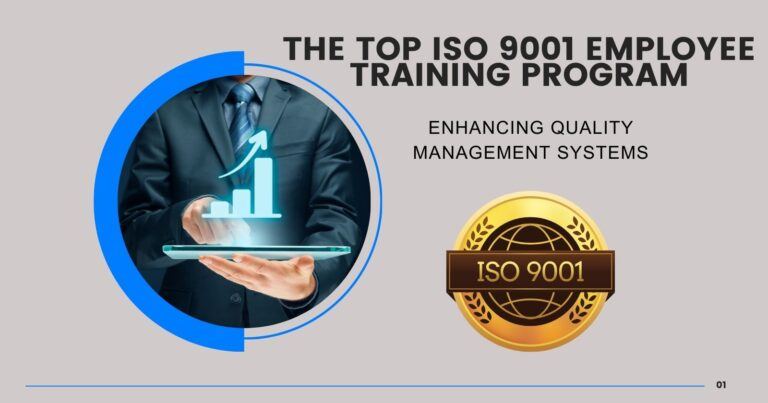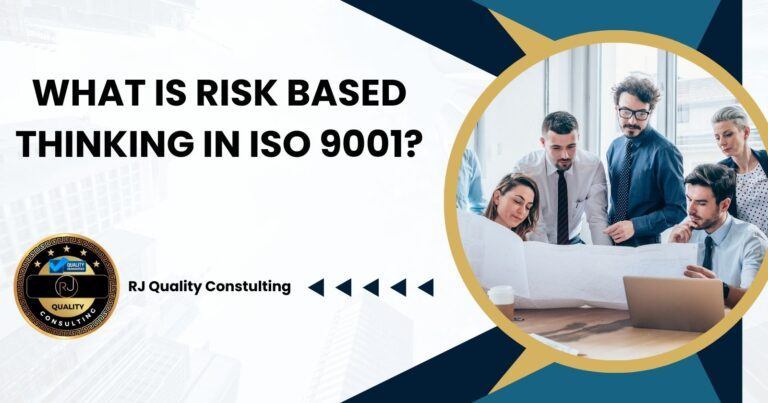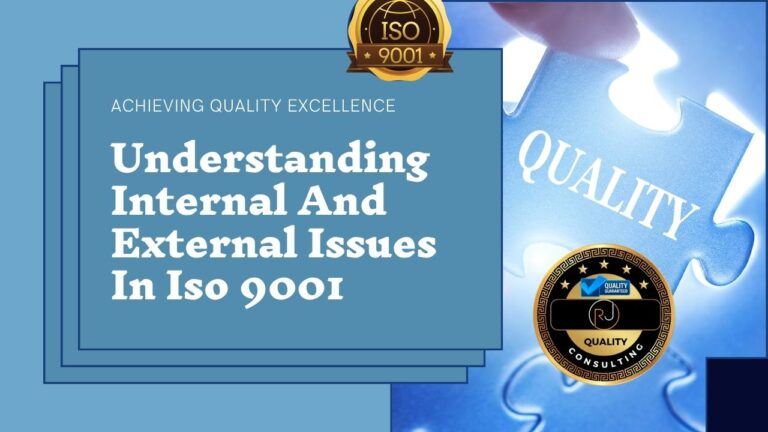ISO 9001 Calibration Requirements: Essential Guidelines for Quality Management Systems
ISO 9001 focuses on quality management systems for organizations. It includes important rules about calibration. These rules make sure that tools and equipment work right and give accurate results. ISO 9001 calibration requirements help companies maintain high standards and improve their products or services.

Calibration is key for many types of equipment. It checks if tools are measuring correctly. Companies need to set up a system to track and test their equipment regularly. This helps catch any problems early and keeps everything running smoothly.
ISO 9001 asks companies to keep good records of their calibration work. They also need to choose the right methods and follow set procedures. This careful approach builds trust in a company’s work and products.
Check Out Our Great Selection of ISO 9001 Online Training Courses
Looking to master ISO 9001:2015 or ensure top-notch training for your team? Explore our Online Courses here!
Key Takeaways
- ISO 9001 calibration rules ensure accurate measurements and better quality
- Regular equipment checks and proper records are essential for compliance
- A well-managed calibration system improves trust in a company’s products
Understanding ISO 9001 Calibration Requirements
The video below describes the ISO 9001 calibration requirements and discusses the documentation requirements that an auditor would want to see to ensure that your organization meets the calibration requirements of the ISO 9001:2015 standard. Watch the video below.
Calibration plays a key role in ISO 9001 quality management systems. It ensures your measurements are accurate and reliable. Let’s explore the main aspects of calibration under ISO 9001.
Importance of Calibration
Calibration is crucial for maintaining quality in your products and services. It helps you:
- Ensure measurement accuracy
- Meet customer requirements
- Comply with regulations
- Reduce errors and waste
Without proper calibration, your measurements may be off. This can lead to product defects, customer complaints, and failed audits. These requirements are not unique to ISO 9001. For example, there are AS9100 calibration requirements as well as many other ISO standards.
Calibration also boosts your confidence in your processes. You can trust that your equipment is giving you correct readings.
Calibration and Traceability
Traceability links your measurements to national or international standards. This creates a chain of comparisons back to a known reference.
Key points about traceability:
- It proves your measurements are reliable
- You need records of all calibrations
- Each step must be documented
Your calibration equipment should be traceable to these standards. This means using certified labs or reference materials.
Traceability helps you show that your measurements are valid. It’s a key part of meeting ISO 9001 requirements.
Requirements for Calibration Process
ISO 9001 sets out several requirements for your calibration process:
- Identify all equipment needing calibration
- Create a calibration schedule
- Use qualified personnel for calibrations
- Keep detailed records of all calibrations
- Label equipment with calibration status
You must also protect equipment from damage that could invalidate calibration results.
Your process should include steps for handling out-of-calibration equipment. This might mean repair, adjustment, or replacement.
Calibration Frequency and Procedure
How often you calibrate depends on several factors:
- Equipment type and usage
- Manufacturer recommendations
- Your quality requirements
- Past calibration results
Some items may need daily checks. Others might only need yearly calibration.
Your calibration procedure should be clear and detailed. It should cover:
- Steps to perform the calibration
- Acceptance criteria
- What to do if equipment fails calibration
Review and update your procedures regularly. This helps you stay current with best practices and ISO 9001 requirements.
ISO 9001 Calibration Requirements, Systems, and Documentation

ISO 9001 requires a robust calibration system with proper documentation. This ensures accuracy, traceability, and quality control for measuring equipment.
Documenting ISO 9001Calibration Activities
You need to create clear procedures for calibration activities. Write step-by-step instructions for each type of equipment. Include:
- Equipment identification
- Calibration frequency
- Acceptable tolerance ranges
- Methods and tools used
- Staff responsibilities
Use simple checklists or flowcharts to make procedures easy to follow. Keep these documents up-to-date and easily accessible to relevant staff. In fact, utilizing an ISO 9001 audit preparation checklist can help the organization prepare for ISO 9001 certification.
Review and update calibration procedures regularly. This helps maintain accuracy as equipment or standards change over time.
Maintaining Calibration Records
Keep detailed records of all calibration activities. Your records should include:
- Date of calibration
- Equipment details (serial number, model)
- Calibration results
- Any adjustments made
- Next calibration due date
Use a spreadsheet or database to track this information. Make sure it’s backed up regularly.
Set up a system to flag when equipment is due for calibration. This helps prevent the use of out-of-calibration tools.
Store records securely and keep them for a set time period. This is often determined by industry standards or customer requirements.
Issuance of Calibration Certificates
Create calibration certificates for each piece of equipment. These should contain:
- Equipment identification
- Calibration date
- Results of the calibration
- Traceability to national or international standards
- Signature of the person performing the calibration
Use a standard template for all certificates. This ensures consistency and makes them easy to read.
Keep copies of all certificates issued. Link them to your calibration records for easy reference.
Make sure certificates are clear and free from technical jargon. This helps customers and auditors understand the information easily.
Quality Management and Continuous Improvement

Quality management systems help organizations meet customer needs and improve their processes. ISO 9001 provides a framework for creating effective systems that drive ongoing improvement.
Role of Leadership in QMS
Top managers play a key role in quality management systems. They set the direction by creating quality policies and goals. Leaders must show commitment to the QMS through their actions. This includes providing resources and supporting improvement efforts.
Leaders communicate the importance of meeting customer and legal requirements. They make sure quality goals align with the overall business strategy. Effective leaders promote a process approach and risk-based thinking throughout the organization.
Managers review the QMS regularly to check if it’s working well. They look for ways to make it better. Good leaders also make sure different departments work together smoothly.
Monitoring, Measuring, and Improvement
Tracking performance is key for improving quality. You need to decide what to measure and how to do it. Common metrics include customer satisfaction, on-time delivery, and product defects.
Set up processes to collect and analyze data. Use charts and graphs to spot trends. Look for the root causes of problems. Try different solutions and check if they work.
Make a plan for ongoing improvement. Set clear targets and timelines. Get input from employees at all levels. Celebrate successes to keep people motivated.
Review your progress often. Adjust your plans if needed. Always look for new ways to get better results.
Competence and Personnel Training
Having skilled workers is vital for quality. You need to figure out what skills your employees need. Then make sure they get the right training.
Keep records of employee education, training, and experience. This helps you see where there might be gaps. Create training plans to address those gaps.
Offer different types of training. This could include classroom sessions, online courses, or on-the-job coaching. Make learning a regular part of work, not just a one-time thing.
Check if the training is working. Ask employees for feedback. See if job performance improves. Update your training programs based on what you learn.
Internal Audit and Review
Internal audits help you find ways to improve. Plan audits for all parts of your QMS. Use trained auditors who are not involved in the work being checked.
Look at processes, not just paperwork. See if people are following procedures. Check if the procedures are working well. Write clear audit reports that show what’s good and what needs fixing.
Act on audit findings quickly. Make an action plan to fix problems. Follow up to make sure changes are made. Use audit results to improve your whole system.
Hold regular management reviews. Look at audit results, customer feedback, and performance data. Decide what changes are needed. Make sure you have the resources to make those changes.
Environmental Considerations and Equipment

ISO 9001 calibration requirements emphasize the importance of proper environmental conditions and equipment management. These factors play a crucial role in ensuring accurate measurements and reliable results.
Managing Environmental Conditions
Environmental factors can impact measurement accuracy. Control temperature, humidity, and air pressure in calibration areas. Use air conditioning and dehumidifiers to maintain stable conditions. Minimize vibrations that could affect sensitive instruments. Install shock-absorbing mounts for equipment if needed. Ensure proper lighting for clear readings and reduce eye strain. Keep calibration areas clean and dust-free to protect equipment. Use air filters and regular cleaning schedules. Monitor and log environmental conditions regularly.
Selection and Maintenance of Equipment
Choose measuring equipment that meets your accuracy needs. Consider factors like range, resolution, and precision. Invest in quality instruments from reputable manufacturers. Create a preventive maintenance schedule for each piece of equipment. Clean and inspect instruments regularly. Replace worn parts promptly. Train staff on proper equipment use and care. Keep detailed records of maintenance activities. Store equipment safely when not in use. Protect sensitive instruments from damage or contamination.
Calibration Status and Identification
Clearly mark the calibration status of all measuring equipment. Use labels or tags showing calibration dates and due dates. Implement a color-coded system for quick identification. Store calibrated and uncalibrated items separately. Use a database or software to track calibration schedules. Set up automatic reminders for upcoming calibrations. Include unique ID numbers on all measuring instruments. Link these IDs to calibration records for easy traceability. Train staff to check calibration status before using equipment. Remove or isolate any out-of-calibration instruments to prevent accidental use.
Certification and Compliance with International Standards

Certification and compliance with international standards are key to ensuring quality and reliability in calibration processes. These standards provide a framework for organizations to meet customer needs and regulatory requirements.
Achieving ISO 9001 Certification
ISO 9001 certification shows that your organization can consistently deliver quality products and services. To get certified, you need to implement a quality management system that meets ISO 9001 requirements.
The certification process involves:
- Documenting your processes
- Training staff on quality procedures
- Conducting internal audits
- Addressing any non-conformities
- Undergoing an external audit by a certification body
A successful audit results in ISO 9001 certification. This certification can boost customer confidence and open up new business opportunities for your organization.
Complying with ISO/IEC 17025
ISO/IEC 17025 is the main standard for testing and calibration laboratories. It sets requirements for lab competence and ensures accurate, reliable results.
To comply with ISO/IEC 17025, you must:
- Maintain technical competence of staff
- Use validated methods and equipment
- Implement a quality management system
- Ensure traceability of measurements
- Participate in proficiency testing
Accreditation to ISO/IEC 17025 demonstrates your lab’s ability to produce precise and accurate test and calibration data. This can give you a competitive edge in the market.
Ensuring Measurement Accuracy and Precision
Accurate and precise measurements are crucial for reliable calibration results. You can achieve this by:
- Using calibrated equipment traceable to national or international standards
- Implementing proper measurement procedures
- Controlling environmental conditions
- Estimating measurement uncertainty
- Regularly checking instrument performance
Validation of measurement methods is also important. This involves testing the method to ensure it can produce accurate results consistently.
By focusing on accuracy and precision, you can improve the quality of your calibration services and meet customer expectations.
Frequently Asked Questions

ISO 9001 calibration requirements can be complex. These common questions cover key aspects like specific standards, accuracy, audits, frequency, and documentation.
What are the specific calibration requirements outlined in ISO 9001:2015?
ISO 9001:2015 requires you to calibrate measuring equipment used to check product quality. You must ensure your tools give accurate results. This includes selecting the right equipment for each task.
Keep records of calibrations. Set up a schedule to calibrate regularly. Make sure the people doing calibrations have the right skills.
How does ISO 9001 ensure the accuracy and traceability of calibration?
ISO 9001 helps you maintain accurate calibrations through several steps. You must use calibration standards that can be traced back to national or international standards.
Keeping detailed records of each calibration creates a clear trail showing the accuracy of your measurements over time.
Can you provide a checklist for calibration audit as per ISO 9001 standards?
A basic ISO 9001 calibration audit checklist includes:
- Verify calibration records for all measuring equipment
- Check that calibration schedules are followed
- Confirm calibrations are done by qualified personnel
- Ensure calibration standards are traceable
- Review procedures for handling out-of-calibration equipment
What is the frequency of calibration required by ISO 9001?
ISO 9001 doesn’t set specific calibration intervals. You need to decide how often to calibrate based on:
- The type of equipment
- How often it’s used
- The impact on product quality
- Manufacturer recommendations
Some tools might need daily checks. Others may only need yearly calibration. The important thing is to decide the frequency based on the actual data or your own experience and expertise on the particular piece of equipment.
How does ISO 9001:2015 differ from ISO 17025 regarding calibration?
ISO 9001:2015 gives general quality management rules for all types of organizations. It includes basic calibration requirements.
ISO 17025 calibration requirements are specifically for testing and calibration labs. It has more detailed rules about how to do calibrations and manage a lab.
What documentation is needed to comply with ISO 9001 calibration requirements?
For ISO 9001 calibration compliance, you need:
- A list of all measuring equipment
- Calibration procedures for each type of equipment
- Calibration certificates or records for each item
- A schedule showing when each tool needs calibration
- Training records for staff who do calibrations
